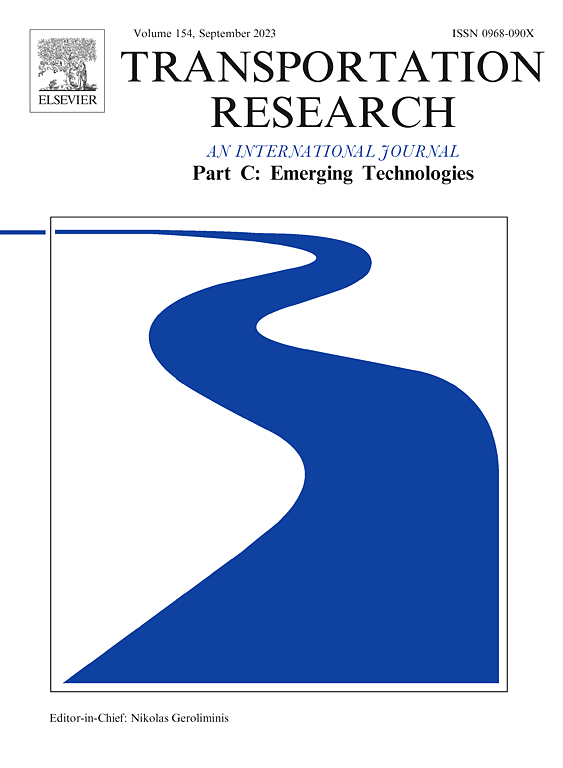TSGDiff: Traffic state generative diffusion model using multi-source information fusion
IF 7.6
1区 工程技术
Q1 TRANSPORTATION SCIENCE & TECHNOLOGY
Transportation Research Part C-Emerging Technologies
Pub Date : 2025-03-09
DOI:10.1016/j.trc.2025.105081
引用次数: 0
Abstract
Accurate analysis and prediction of traffic states are fundamental and crucial for intelligent transportation systems, playing a significant role in enhancing the efficiency and safety of traffic systems. Advances in deep learning have promoted the development of traffic prediction. However, some traditional prediction methods primarily rely on historical traffic data to sequentially predict future traffic trends. While some also incorporate one or more influencing factors, such as weather and day of the week, as covariates, they often lack a unified fusion approach to model the impact of these covariates on future traffic states, and they are prone to error accumulation in long-term predictions. To address these challenges, we propose TSGDiff, a novel traffic state generative diffusion model using multi-source information fusion. The proposed method leverages an innovative diffusion model framework and integrates various sources of information, such as traffic data, weather, and weekdays, to enhance the accuracy of traffic state prediction. TSGDiff transforms historical spatiotemporal information and future environment information into feature representations using an attention-based spatiotemporal extraction module and a traffic semantic encoding module, respectively. These feature representations serve as guiding conditions for the diffusion model to generate traffic states. By incorporating the prediction horizon as an input parameter, TSGDiff directly generates future traffic states point-to-point, thereby avoiding error accumulation inherent in iterative prediction methods. To adapt the diffusion model to graph structure road network data, we introduce a Graph Attention U-Net (GAUNet) to capture the spatial correlations in traffic data. Experiments on real-world Beijing traffic datasets demonstrate that TSGDiff significantly outperforms baseline models for long-term predictions and performs comparably for short-term predictions.
求助全文
约1分钟内获得全文
求助全文
来源期刊
CiteScore
15.80
自引率
12.00%
发文量
332
审稿时长
64 days
期刊介绍:
Transportation Research: Part C (TR_C) is dedicated to showcasing high-quality, scholarly research that delves into the development, applications, and implications of transportation systems and emerging technologies. Our focus lies not solely on individual technologies, but rather on their broader implications for the planning, design, operation, control, maintenance, and rehabilitation of transportation systems, services, and components. In essence, the intellectual core of the journal revolves around the transportation aspect rather than the technology itself. We actively encourage the integration of quantitative methods from diverse fields such as operations research, control systems, complex networks, computer science, and artificial intelligence. Join us in exploring the intersection of transportation systems and emerging technologies to drive innovation and progress in the field.

 求助内容:
求助内容: 应助结果提醒方式:
应助结果提醒方式:


